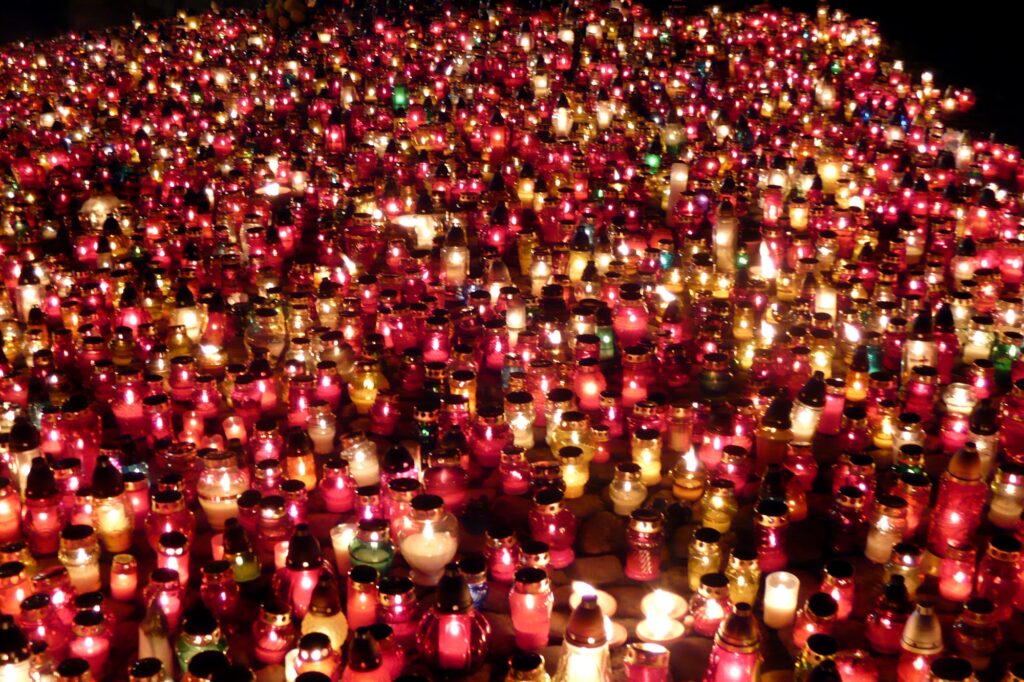
In European countries such as Poland and Germany, All Saints’ Day is a day for folks to visit family gravesites and offer remembrances.
The celebration of Halloween is a big deal in the United States, and some of our customs have spread to other parts of the world. Halloween is the first of a series of three days called “Allhallowtide”, a Western Christian tradition that calls for remembrance of the dead. “Halloween” is actually derived from “All Hallows’ Eve”, meaning it was the night before All Hallows’ Day – better known as All Saints’ Day. In some nations, All Saints’ Day is more well-known and more commonly celebrated than Halloween. Let’s examine the origins and some of the customs surrounding All Saints’ Day.
Origins
Christian church celebrations of martyrs of the faith have existed since about the 4th century CE, but the evidence for these celebrations falling on November 1st goes back to around the 800s. In early Christianity, there was a tendency to syncretize church celebrations with older pagan festivals, and some scholars believe that the same thing happened with All Saints’ Day. According to their arguments, All Saints’ Day was set at November 1st to coincide with the Celtic festival of Samhain. Other scholars dispute this as Samhain was established more like a harvest festival and had very spurious connections to celebrations/remembrances of the dead. Despite this, some of the customs of Samhain – the wearing of costumes specifically – have a more direct connection to the Halloween celebrations we’re more familiar with.
National Customs of All Saints’ Day
In many nations around the world, All Saints’ Day is more widely celebrated than Halloween. In Europe, families use the day to visit the graves of deceased relatives and offer remembrances for the dead. It is a public holiday in Germany, and some German states even have restrictions on activities such as concerts for the day. The French know All Saints’ Day as La Toussaint and traditionally lay chrysanthemum flowers at gravesites.
Latin America features some of the most famous observances of All Saints’ Day in the world, with Mexico at the fore. The celebration of Día de los Muertos begins on this day, where families build private altars for deceased family members and offer food and drinks to their souls. The celebratory tone of the Day of the Dead is a stark contrast to the solemn remembrances in Europe. Traditions in other Latin American countries aren’t quite as celebratory as those of Mexico, but still have a lighter atmosphere than Europe – for example, towns in Guatemala host festivals featuring gigantic colorful kites.
Explore the World with AESU!
Are you ready to plan an adventure of a lifetime? AESU offers unique, thrilling travel programs for college students and young professionals at affordable rates. Each trip is action-packed and informal—designed just for people your own age. We are also able to design custom tours just for your group.
Experience an exhilarating adventure in 2022 on the Cosmopolitan, Great Escape, Greek Island Hopper tour, and more! 2022 tour dates are now available! If you have any questions or want help booking your next adventure, please contact AESU by calling 800-638-7640, or fill out the contact form found on our website. Follow AESU on Facebook, Twitter, Instagram, LinkedIn, and Pinterest.
